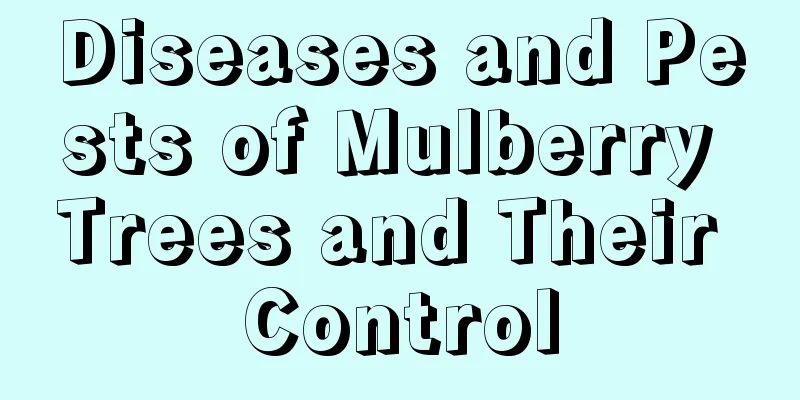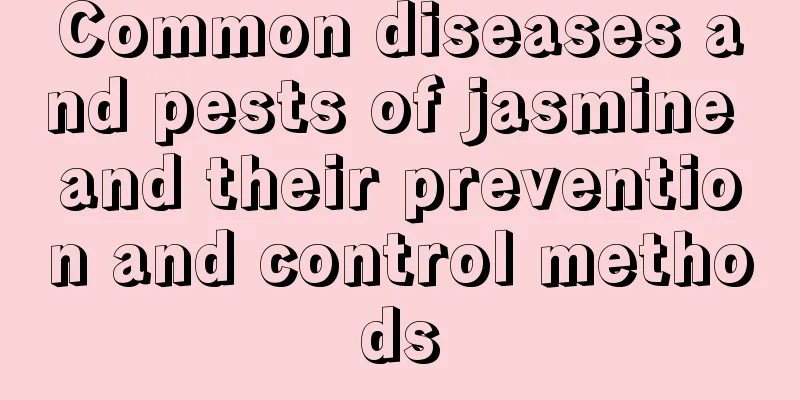Diseases and Pests of Mulberry Trees and Their Control

Diseases of mulberry trees and their prevention and treatmentPowdery mildewIn the initial stage of the disease, white powdery circular spots appear on the back of the leaves, which then gradually expand and connect into pieces. At the same time, the front of the mulberry leaves turns light yellow-brown. In the later stage, small yellow dots grow densely in the center of these spots, and then turn black. This disease often occurs on leaves in the middle of branches and varieties that harden early. The main prevention and control methods are as follows: 1. Raise silkworms in batches in autumn, first pick the mulberry leaves at the bottom of the mulberry strips; 2. Take timely measures to fight drought in the dry season to delay the hardening of mulberry leaves; 3. In the early stage of the disease, spray the leaves with 1000 times diluted 50% thiophanate, and spray again after 10-15 days. Mulberry brown spotIt often occurs on young leaves, especially in hot, humid and insufficient sunlight weather. In the early stage, the lesions appear as water-soaked sesame-sized spots with a dark brown color. Later, they expand into nearly circular or irregular spots with white or slightly red powdery blocks growing around them. Later, the color turns dark brown and the leaves turn slightly yellow. In severe cases, the spots are connected to each other, and the leaves turn yellow and are easy to fall off. The main prevention and treatment measures are as follows: In the early stage of the disease, spraying the leaves with 1500 times diluted 50% carbendazim or 1500 times diluted 75% methyl thiophanate can achieve good prevention and control effects without causing any harm to silkworms. Pests of mulberry trees and their controlMulberry beetleThere are many species, mainly black velvet beetle, brown beetle, copper green beetle, etc. The adult insects cause damage by gnawing on mulberry buds, tender shoots and mulberry leaves, especially severely affecting the tender buds of seedlings. The prevention and treatment methods are as follows: 1. Take advantage of the beetle's ability to feign death and knock it down and kill it when the adult beetles are mating and feeding at dusk. 2. Use light to lure and kill adult insects. 3. When plowing the soil in winter, remove the larvae and grubs at the roots of seedlings. 4. In the evening, you can spray 1000 times diluted 80% DDT emulsion or 1000 times diluted 50% phoxim emulsion to kill adult insects. |
<<: Common diseases of safflower and their control
>>: Diseases and Pests of Juniper and Their Control
Recommend
How to grow and maintain the side shoots of the succulent Oplina
How to grow Oplina Common Oplina has single or do...
Spinach germination method: soaking seeds to germinate quickly
Spinach is grown in many areas of our country. Du...
He uses the garbage that is thrown away after one use to grow flowers, saving a lot of money
Disposable lunch box 1. Use disposable lunch box ...
Diseases and pests of bottle palm and their control
Diseases and pests of bottle palm and their contr...
How many years does black jujube bear fruit?
Black dates have been planted for several years a...
How to grow variegated philadelphus
1. Soil preparation It is resistant to barrenness...
Platycodon grandiflorum flower language, pictures of Platycodon grandiflorum
1. Flower Language There are many meanings of Pla...
How long does it take for the green radish to grow after repotting?
1. Duration of seedling acclimatization After rep...
How to germinate Clivia seeds
1. Stratification Clivia is a plant of the Amaryl...
What to do if the roots of the green radish are rotten
1. Cut off rotten roots Carefully remove the poth...
Does peony prefer shade or sun?
Does peony prefer shade or sun? Peony is very eas...
What flowers are suitable for growing in Diqing? What are the city flowers and trees?
1. Climate characteristics of Diqing Diqing has a...
Rooting method of elm tree
1. Treat with rooting water If you want the elm t...
How to make the green radish take root quickly and turn one leaf into a whole pot
1. How to make the green radish take root quickly...
How many days does it take for wheat to sprout?
Wheat is an important cereal crop. Its growth cyc...









